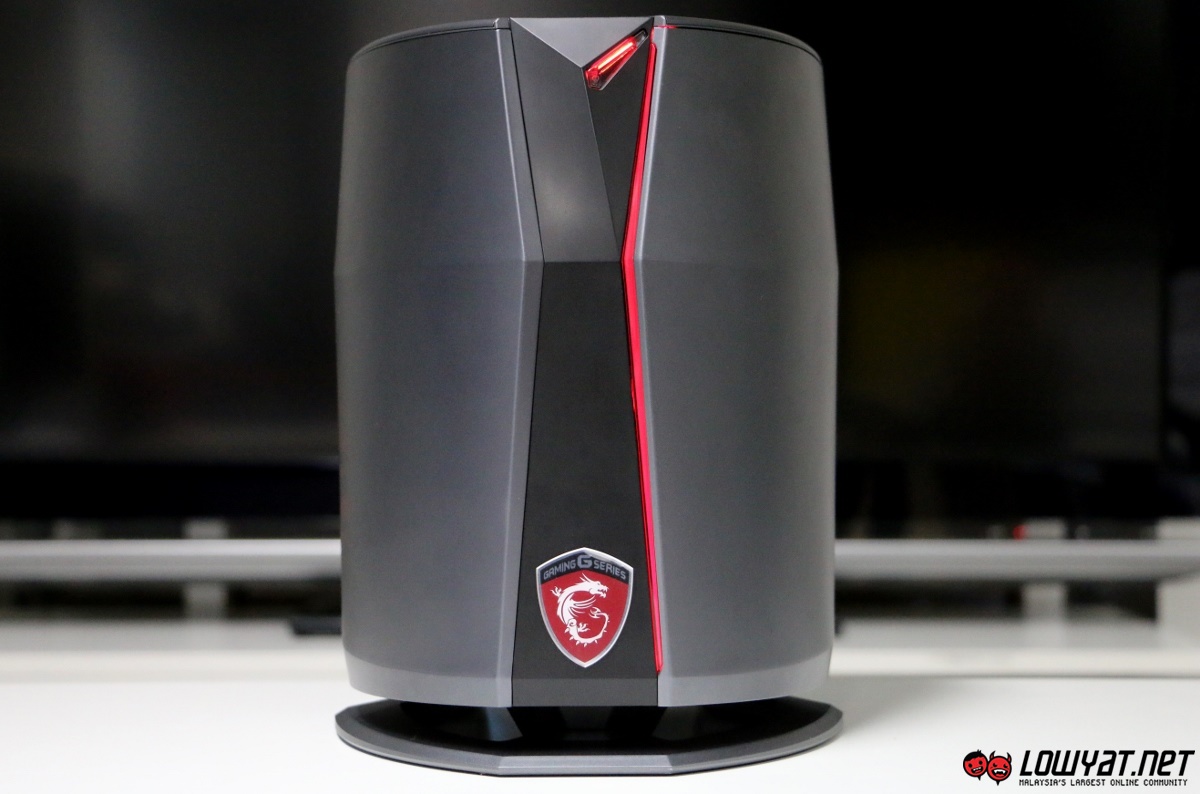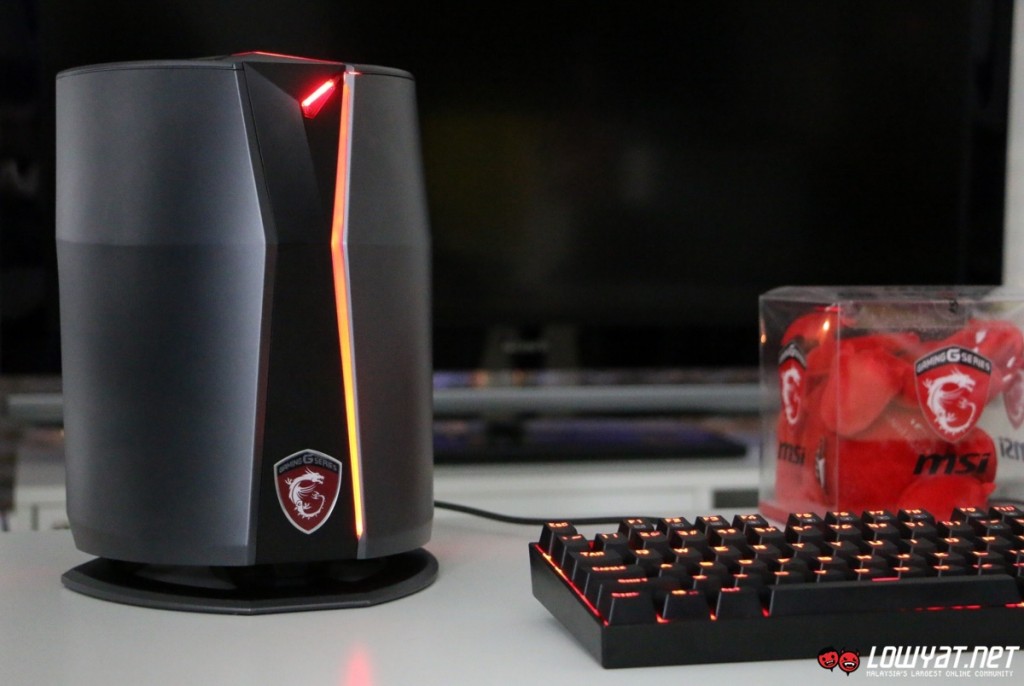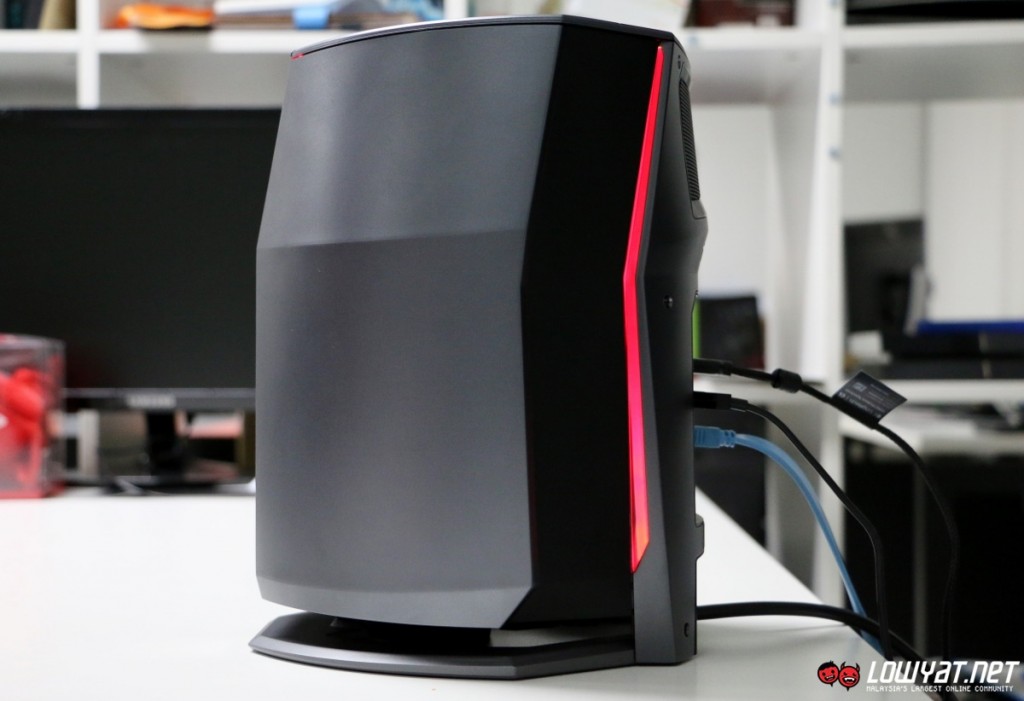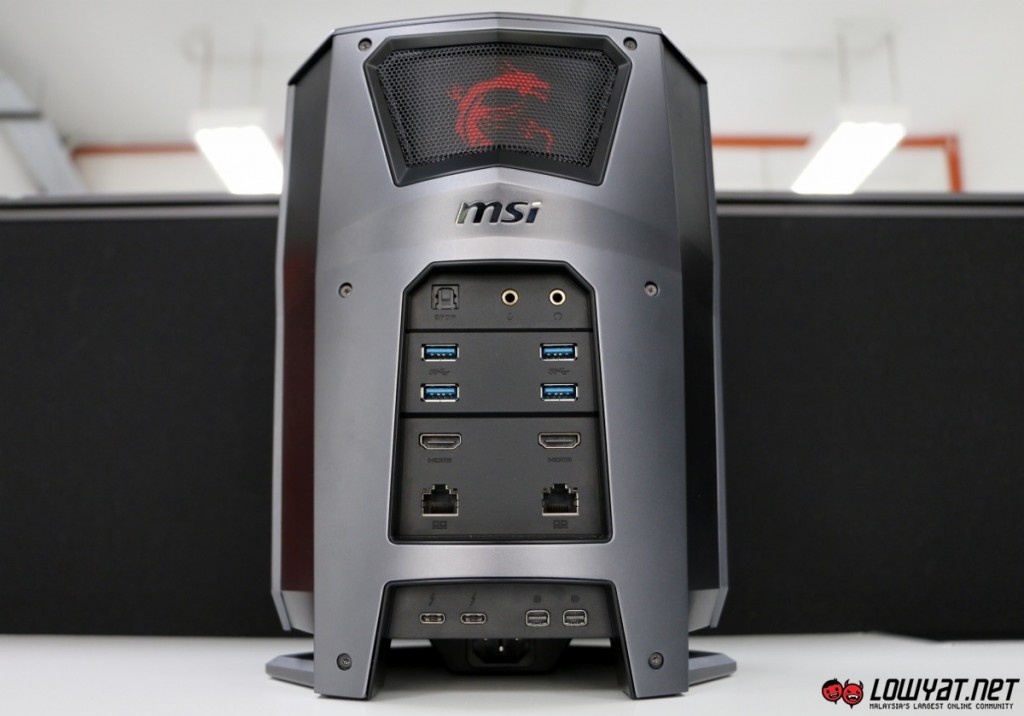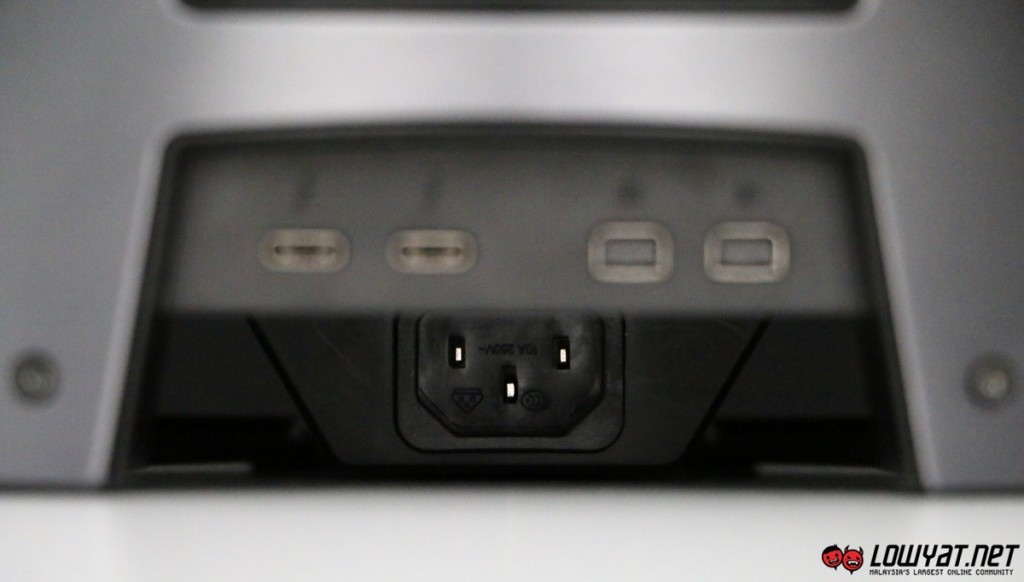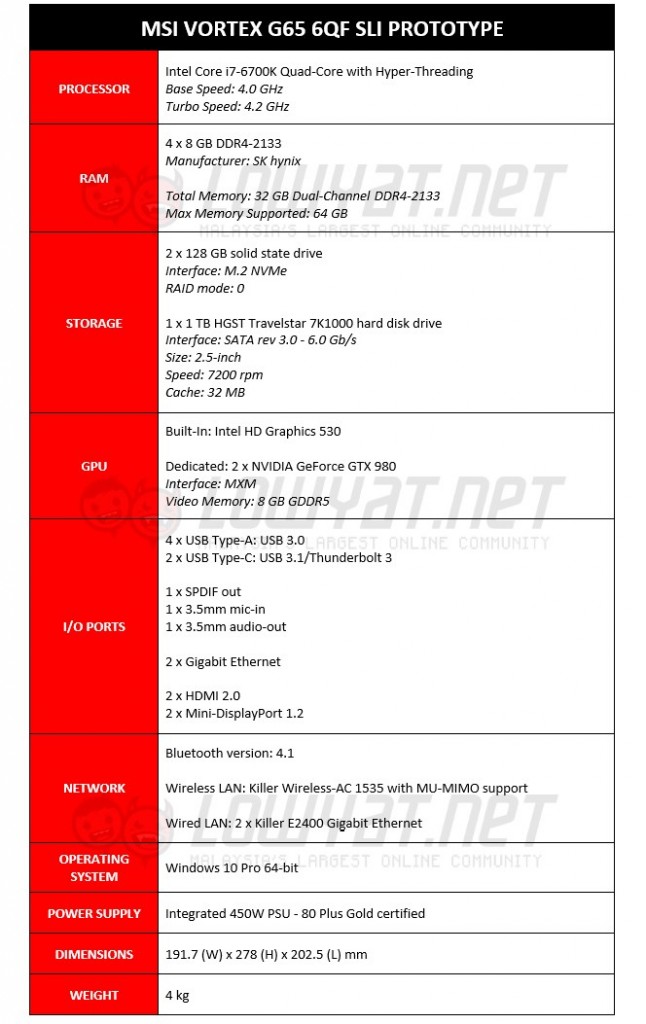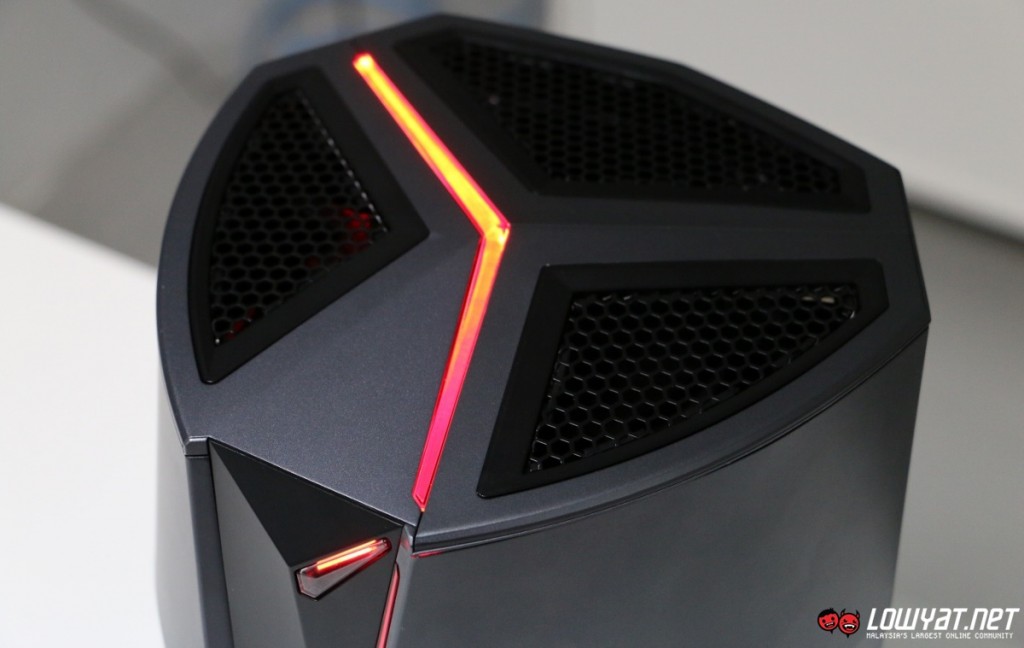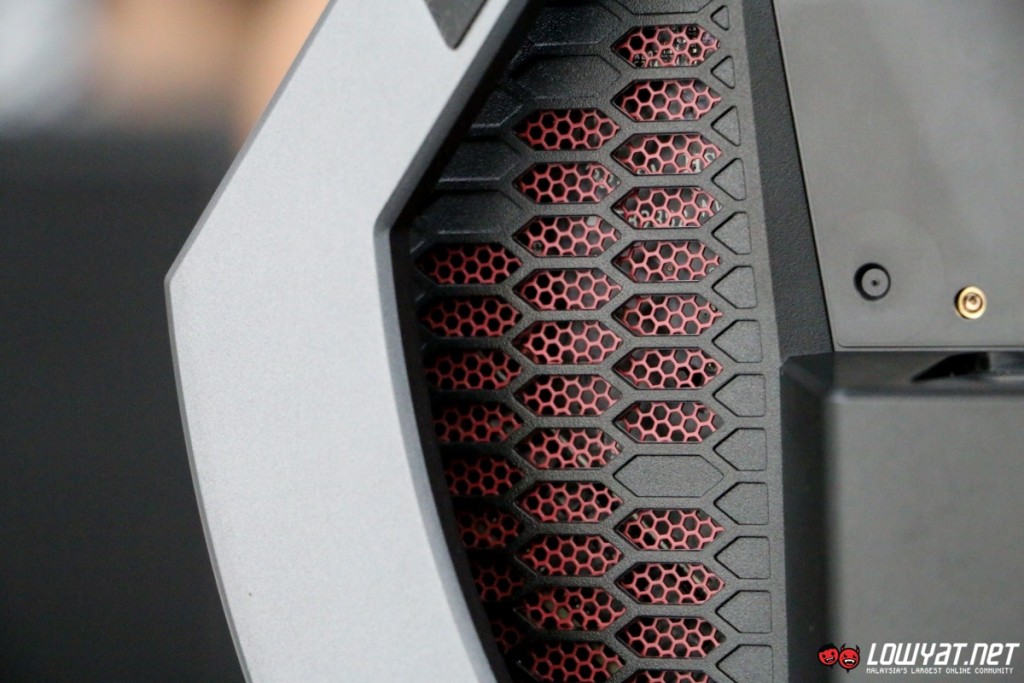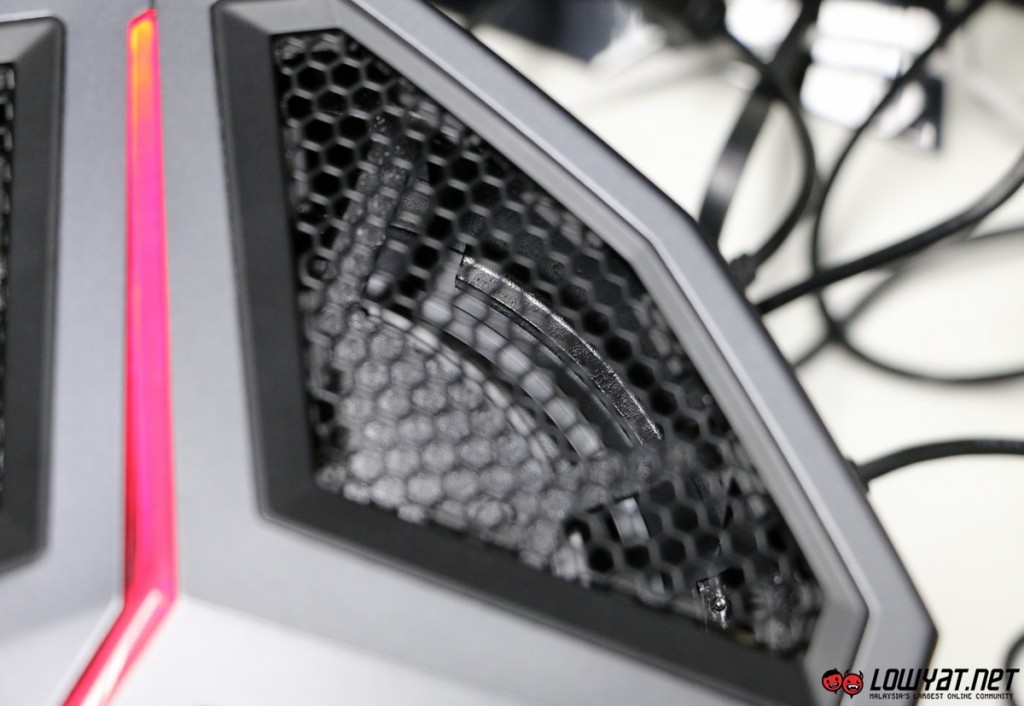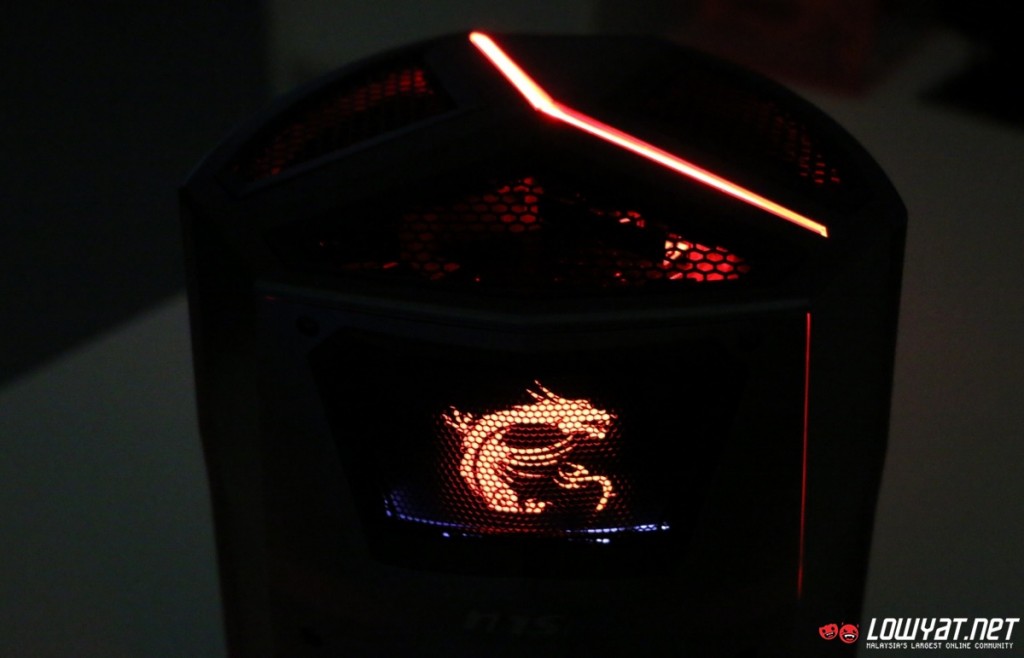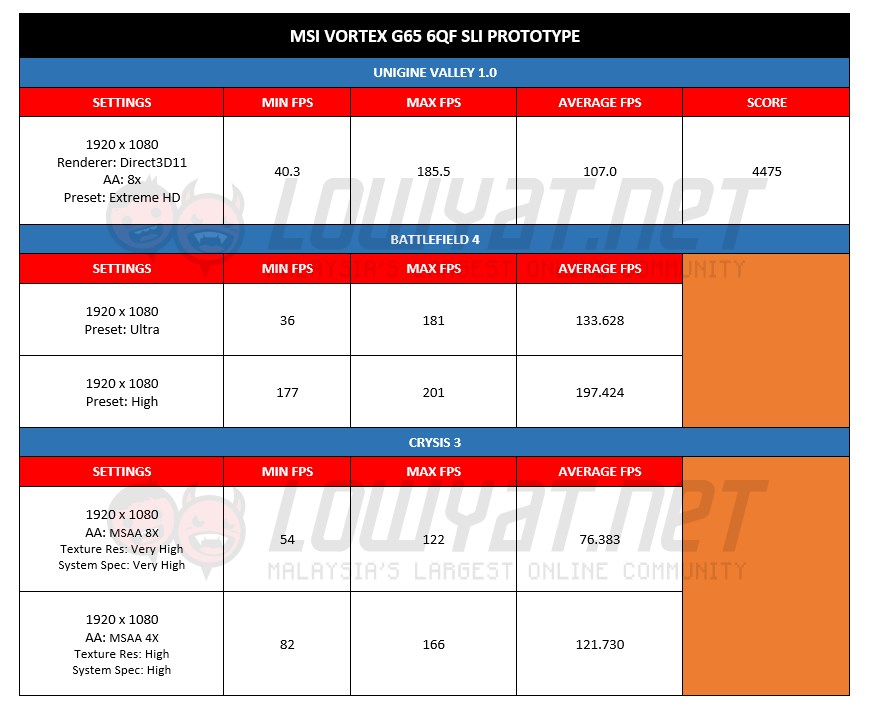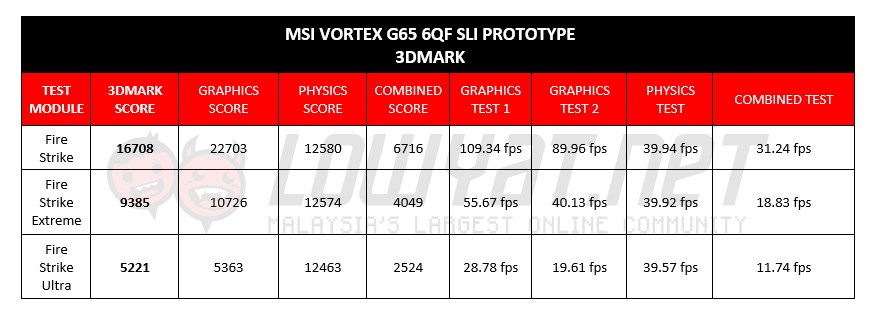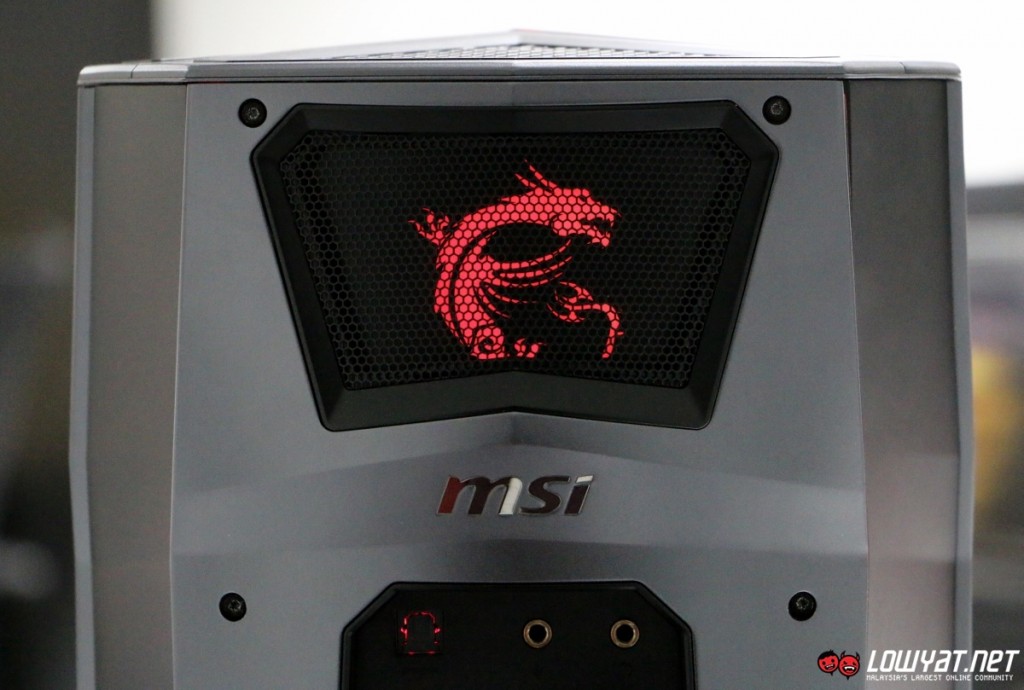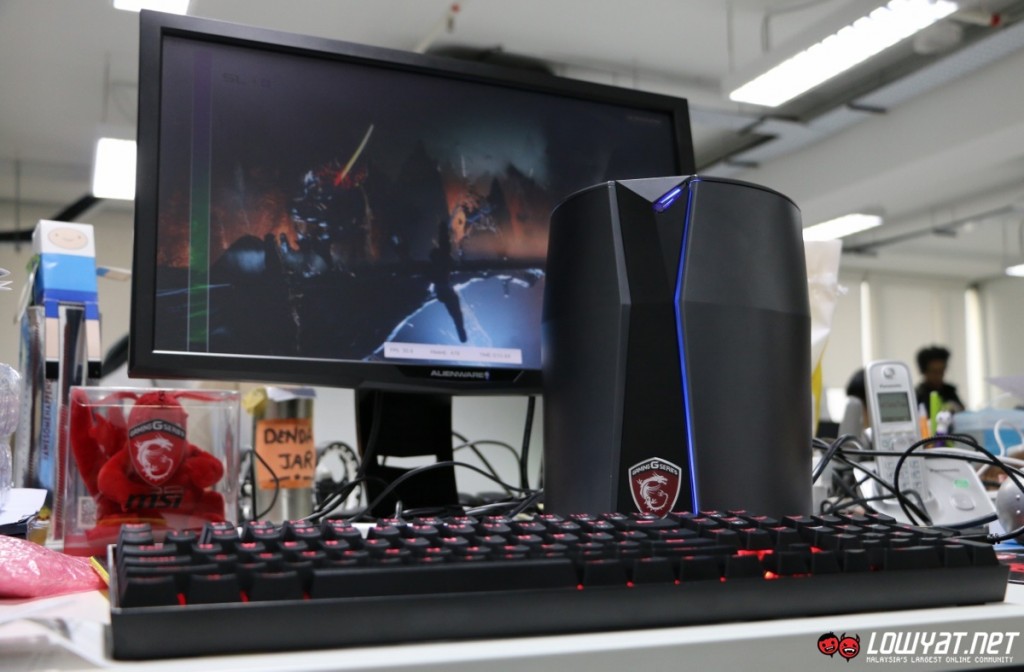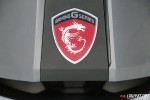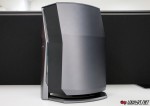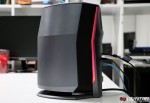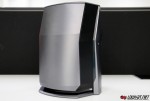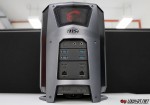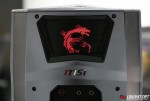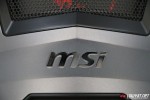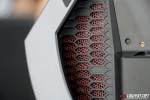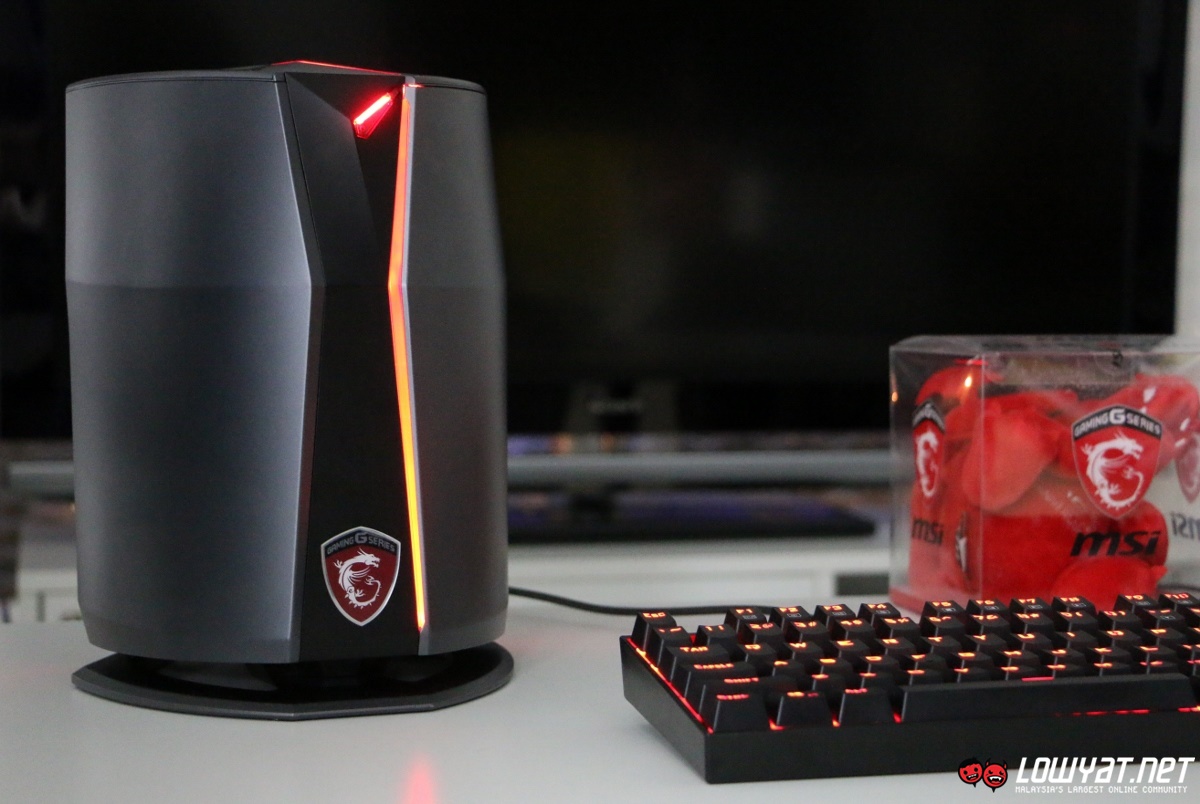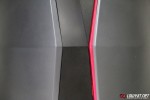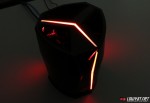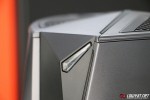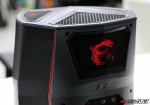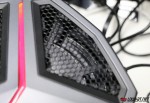While MSI might be better known for its motherboards, graphics cards, and gaming laptops at this side of the world, the Taiwanese company actually does produce compact desktop gaming PCs such as the Nightblade series. However, the upcoming MSI Vortex which recently made a brief appearance at our HQ is a totally different beast altogether.
Standing at only 27.8cm high, it doesn’t look anything like previous compact desktop PCs that MSI has released in the past. Instead of a boxy exterior, the Vortex has a cylindrical design that reminds us of the Apple Mac Pro. However, the design on the Vortex which includes aggressive edges and customizable LED light strips on its exterior makes the Vortex look significantly different and wilder than the sleek lines of Mac Pro.
In addition to the differences in styling, the Vortex is also predominantly made out of high quality plastic as opposed to the Mac Pro’s aluminum body. That being said, MSI still utilized metal for certain parts of the Vortex’s exterior including its fan grille, stand, and rear frame.
All of the Vortex’s I/O ports are located at its back which might annoy some users that prefer to have at least some of them on the front of the case for easier access. There are plenty of them around though – four USB 3.0, one optical/SPDIF output, one microphone input, one audio output, two HDMI 2.0, two mini DisplayPort, two Gigabit Ethernet, and two USB 3.1 Type-C that also double up as Thunderbolt 3 ports – needless to say, this set of I/O ports should satisfy virtually all users out there.
Back at CES 2016, MSI touts the Vortex as a very powerful compact desktop PC. Even in its prototype form, the Vortex is indeed packed with plenty of high end components as you can see in the list below:
Powerful components generate plenty of heat. To combat that inside the Vortex, MSI has implemented a thermal solution called Storm Cooling. With the help of a large fan on top of the Vortex, the cooling system works by pulling air upwards from the bottom of the machine so that the heat from the heatsinks on these components within the Vortex can be dispersed through the vents at the top of the machine.
One can actually feel warm air gushing out from the top of the Vortex when it is running at full load although its case was hardly warm at all. In full force, it is hard to ignore the noise generated by its massive fan, though it should be a minor issue for most users.
Meanwhile, the Storm Cooling solution on our prototype unit is capable enough to keep the temperature of the GPU and CPU within their thermal limits although they still ran pretty hot with a maximum temperatures of 88°C and 74°C respectively. When it comes to cooling down those components, Storm Cooling actually did quite well as it takes around 4 to 5 minutes to reduce the GPU’s temperature to cool under 60°C while taking almost no time to reduce the CPU’s temperature to under 50°C once the machine transitions from heavy load to idle state.
According to our MSI Afterburner log, the lowest operating temperature for this particular prototype unit was 44°C for the GPU and 38°C for the CPU. Interesting enough, we noticed that the large fan would usually stop spinning at these temperatures which shows the dynamic nature of the Storm Cooling solution.
Naturally, we also ran some benchmarks. Here’s how the Vortex performed:
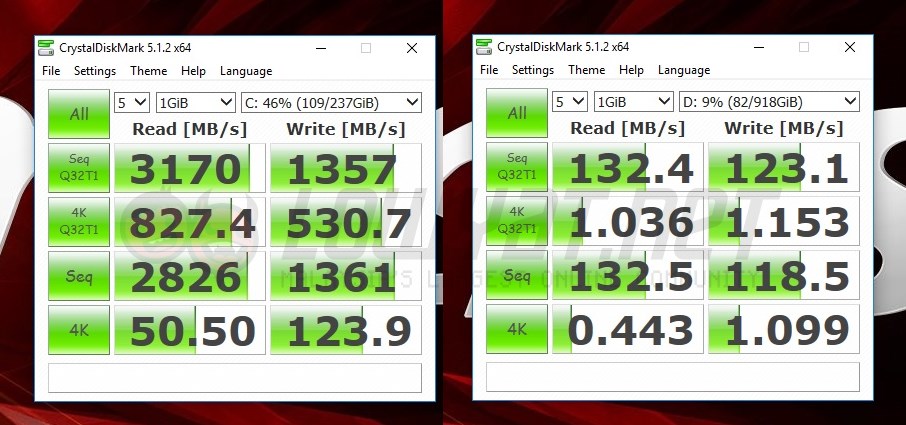 (L – R): Benchmark results for solid state drive and hard disk drive.
(L – R): Benchmark results for solid state drive and hard disk drive.
From these results, it is clear that the Vortex shouldn’t have any problems providing excellent FPS rates for games at full HD resolution. The real challenge for it should be gaming using multiple monitors or at 4K resolution which we were not able to test due to time constraints, unfortunately.
As far as our first impressions are concerned, this prototype unit has clearly showcased Vortex’s potential as a highly compact and exceptionally powerful gaming machine. Honestly speaking, we wouldn’t even know that this particular unit is a prototype if it wasn’t for the sticker that MSI has put on the machine – it functioned without any glitches or issues during its brief time with us.
With great firepower, comes an equally great price tag. In the case of Vortex, while officially prices are not yet available, it is apparently expected to be priced at around US$2,000 (about RM8,230) for the GTX 960 SLI model and US$4,000 (about RM16,461) for the higher-end GTX 980 SLI model. This means that it will not be within everyone’s reach but if you are interested to get your hands on it, you won’t have to wait long: the MSI Vortex will be launched in Malaysia sometime in the second quarter of 2016.
Follow us on Instagram, Facebook, Twitter or Telegram for more updates and breaking news.


